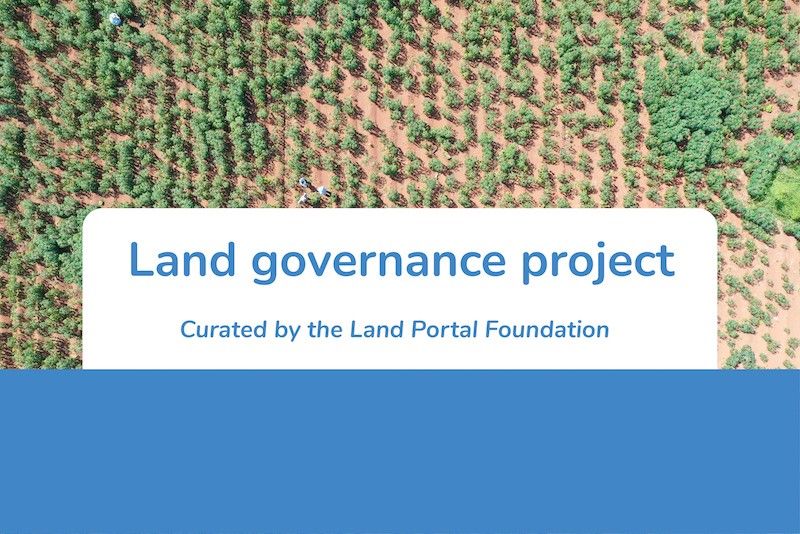Community / Land projects / Maintaining and Enhancing Water Yield through Land and Forest Rehabilitation (MEWLAFOR)
Maintaining and Enhancing Water Yield through Land and Forest Rehabilitation (MEWLAFOR)

€1566084.157
02/22 - 03/25
Активно
This project is part of
Implementing Organisations
Donors
Data Providers
Objectives
To demonstrate an innovative approach to how a proactive multi-stakeholder private sector-catalyzed partnership for water stewardship can be upscaled to achieve transformational changes in the restoration of degraded terrestrial ecosystems.
Other
Note: Disbursement data provided is cumulative and covers disbursement made by the project Agency.
Target Groups
(200)The project is expected to result in a wide range of socioeconomic benefits as well as global environmental benefits. MOEF has determined that in total, 278,600 people (153,230 make and 125,370 female) are expected to benefit from the project. By promoting nature-based infrastructure solutions, the land will retain its productive capacities and the water retained can be used for a wide range of socioeconomic-relevant activities, from drinking water supply for resident communities by the local PDAMs (Perusahan d’Aerah Air Minum; Regional Drinking Water Supply Companies), to irrigation, to use for industrial purposes. (201)The SAVi assessment includes an integrated cost-benefit analysis (CBA) that estimates the direct and indirect benefits and direct costs of improved management of 26,033 ha and installing the absorption wells under this project (see Annex M). The study area considered to assess impacts is the three sub-catchment areas, covering 179,142 ha. This area intersects seven regencies and two municipalities. The model combines the results of the SAVI’s spatially explicit analysis with data from the Indonesia National Statistics Office, the East Java Statistics Office and MOEF. Additional data gaps were filled using numbers from international literature. Net benefits for the project are calculated assuming a 20-year lifetime and also consider how the net benefits would change if the lifetime were extended to 30 years. The results of the integrated CBA is presented in Table 21. The CBA considers project performance under two climate change scenarios: (1) Representative Concentration Pathway (RCP) 4.5, which assumes emissions peak in 2040, and RCP 8.5, which assumes continued high reliance on fossil fuel-based energy. Table 21: Integrated Cost Benefit Analysis Numbers in italics depend on climate scenario. Net benefits are equal to avoided costs plus added benefits minus investment costs. Net benefits are positive and increase with greater climate variability. All values are in 2020 million USD. 20-year lifetime (2021-2040) 30-year lifetime (2021-2050) RCP 4.5 RCP 8.5 RCP 4.5 RCP 8.5 Added Benefits Value of bamboo exports 0.21 0.21 0.35 0.35 Value of agroforestry benefits 2.12 2.12 3.35 3.35 Tree planting wages 0.52 0.52 0.52 0.52 Carbon storage benefit 31.99 31.99 31.99 31.99 TOTAL ADDED BenEFITS 34.84 34.84 36.21 36.21 Avoided Costs Avoided flood damages to households 24.00 24.53 486.79 77.96 Avoided flood damages to agriculture 12.06 14.00 193.73 36.90 Avoided erosion damages to agriculture 17.85 42.64 41.65 52.56 Avoided nitrogen pollution 17.10 17.10 25.65 25.65 Avoided phosphorus pollution 8.08 8.08 12.12 12.12 TOTAL AVOIDED COSTS 79.09 106.34 759.93 205.18 Investment & Maintenance Costs Improved land management investment cost 8.94 8.94 8.94 8.94 Absorption wells and biopori investment cost 0.56 0.56 0.56 0.56 Annual maintenance costs 0.10 0.10 0.14 0.14 TOTAL COSTS 9.60 9.60 9.64 9.64 NET BenEFITS 104.34 131.59 786.50 231.75 BenEFIT TO COST RATIO 11.87 14.71 82.56 25.03 (202)The assessment also calculates the net present value (NPV) and internal rate of return (IRR) of the project, for which the avoided costs and added benefits are accounted as revenue streams of the project. Upon extending the integrated cost-benefit analysis to account for inflation as well as the time value of money, the SAVi finds the following societal net present values (S-NPV) and sustainable internal rate of returns (S-IRR) under the different climate scenarios and lifetime scenarios (Table 22). Table 22: The NPV and IRR of the Project Lifetime of project 20-year lifetime (2021-2040) 30-year lifetime (2021-2050) Climate Scenario RCP 4.5 RCP 8.5 RCP 4.5 RCP 8.5 S-NPV 63,539 71,551 208,593 92,259 S-IRR 62.8% 74.8% 62.9% 74.8% S-NPV (excluding carbon benefit) 41,850 49,861 186,903 70,569 S-IRR (excluding carbon benefit) 56.5% 69.5% 56.6% 69.5% NPV (excluding carbon benefit and avoided costs) -8,330 -8,330 -8,136 -8,136 IRR (excluding carbon benefit and avoided costs) -11.0% -11.0% -4.8% -4.8% (203)Based on the results in the two tables above, the SAVi concludes that the MEWLAFOR project, in the Indonesian context, has positive benefits that far exceed the costs when externalities are considered: · The project is economically viable for investors and generates net benefits for society when considering both material economic impacts (with an IRR of 22.5%), as well as material impacts and externalities (with an IRR above 62%). · The value of the project increases when climate variability is greater because there are more avoided costs. Reforestation and avoided deforestation mitigate flooding and erosion damages. Hence, when the potential for these damages is larger, the avoided costs (i.e., benefits) of the project increase. This highlights that nature contributes to climate resilience and increased adaptive capacity. · The project has positive net benefits for the three sub-catchment areas. For the 20-year lifetime, net benefits are expected to be between US$104.34 million and US$131.59 million (undiscounted and uninflated). · Although not included in the CBA, the SAVi also estimated the downstream impacts of widespread forest restoration and the absorption wells. It found that improved land management on a large scale could increase groundwater recharge by up to 6.1% per year. Absorption wells will further increase groundwater availability and could mitigate one third of downstream flood damage. (204)Although the societal value is large, the project underscores the need for broad coordination among stakeholders to replicate and scale similar projects. The MEWLAFOR project is a demonstration of the benefits that can be reaped when this coordination is achieved across sectors and geographies and stakeholders are able to restore degraded land and improve water management.



